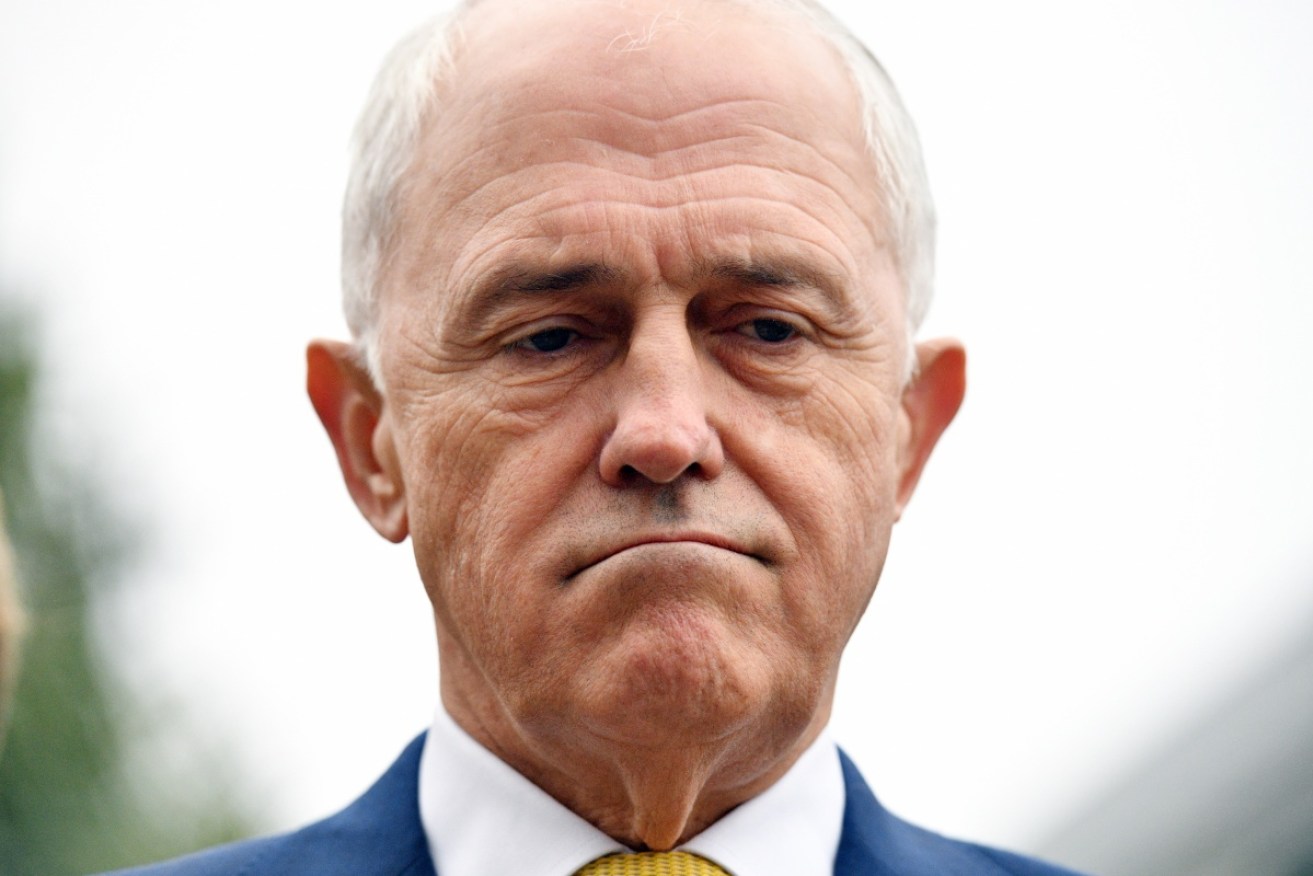‘Turnbull, stop treating us like mugs. Show us your economic plan’


The government lost its 30th consecutive Newspoll on Sunday night. Photo: AAP
Prime Minister Malcolm Turnbull and his shouty Treasurer Scott Morrison are very fond of talking about their “economic plan”. Australians hear a lot about this plan and the benefits it’s delivering, such as the creation of 403,100 jobs last year.
However, one might be hard pressed to find the particular component of “the plan” responsible for delivering all these jobs. In fact, one might be hard pressed to find the plan itself. For there is no plan as most people would understand the word to mean.
There is no master plan; no single document, blueprint or “road map” that sets out the challenges facing the Australian economy and an integrated strategy for overcoming those challenges and achieving desired outcomes.
In the absence of actually having an economic plan the government has preferred the much easier option of simply repeating ad nauseam that it has one until most people come to believe that such a plan must really exist. But there is no such plan, as is clear from the Liberal Party’s own website. What it states as “Our Plan” is in fact a grab-bag of disparate policies, aspirations and self-serving statistics.
People like the idea of a government having a plan; they welcome a government that has a vision for Australia and knows how to get there. It gives them the confidence that the government understands not only the big-picture issues but also the grass-roots issues that most concern citizens and households that are doing it tough.

The government may argue it has fulfilled some parts of its plan: tax cuts for small business, “sensible” budget cuts, work for the dole, and fighting the CFMEU. Photo: Liberal Party
Let us suspend disbelief for a moment and assume the government was not taken by surprise by the happy statistic that 403,100 jobs were created in 2017 – more jobs than in any calendar year on record. Given that this is an outcome attributed to its economic plan, the government may wish to shed some light on the specific policy levers that achieved this historic milestone. How does the record number of jobs compare with its own modelling for the year? And how many jobs does it expect to create this year?
There is another important question. The government appears little concerned by a decade of record-low wages growth which is hurting households, choking consumption and threatening government revenue. The post-global financial crisis economy is a low-wages economy. Even as job numbers grow in line with improved economic activity, wages stagnation remains an entrenched feature of the post-GFC labour market.
The government argues lowering the corporate tax rate for big business is vital for job creation and wages growth. But it knows no such thing.
Given the creation of 403,100 jobs in 2017 the government would seem to have little reason for declaring tax cuts for big business as make-or-break for the Australian economy.
To the extent that it has a plan, the government is placing its faith in a growing economy to not only create jobs but drive wages growth. That assumption can no longer be relied upon post-GFC. Mr Morrison acknowledges there has been some dislocation of traditional economic orthodoxies since the GFC, but he does not consider this a “permanent phenomenon”.
Considering the GFC was 10 years ago, it’s a brave or foolish government that takes a business-as-usual approach when business has been anything but for the past decade.
The government claims to have a plan yet Australia is groping in the dark on so many issues: the impact of entrenched wages stagnation on the standard of living; the meltdown that awaits when interest rate rises meet record-high household debt; the long-term drag on the economy caused by shortfalls in retirement incomes for baby boomers and future generations caught in the casualised-labour economy; a creaking federal tax system in urgent need of reform; and a failure to tackle energy-market reform.
Far from having a plan this government is taking a piecemeal approach to managing the economy. The government has raised the prospect of personal tax cuts, which it insists can be introduced along with big-business tax cuts, were the Senate to reconsider its opposition, without derailing the government’s commitment to return to surplus in 2021.
Is the economy really so buoyant that such largesse can suddenly be placed on the agenda?
There is no plan, but there should be. The Australian economy is not out of the woods yet and it’s irresponsible of both the Prime Minister and his Treasurer to present a rose-coloured view of the challenges ahead.
Both cheerily insist that they are optimists, but since when has optimism had anything to do with managing the economy?
Leo D’Angelo Fisher is a former associate editor and columnist with BRW and columnist for the Australian Financial Review. He was also a senior writer at The Bulletin magazine.








